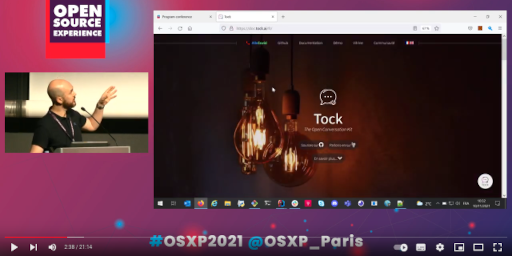Welcome to Tock - open conversational platform
Tock (The Open Conversation Kit) is a complete and open platform to build conversational agents - also known as bots.
Tock does not depend on 3rd-party APIs, although it is possible to integrate with them. Users choose which components to embed and decide to keep (or share) ownership of conversational data and models.
Tock has been used in production since 2016 by OUI.sncf (Web/mobile, messaging platforms, smart speakers) and more and more organisations (energy, banking, healthcare…).
The platform source code is available on GitHub under the Apache License, version 2.0.
Overview
The Tock.ai site is a good starting point to learn about the solution and its growing community. Tutorials, presentations and a live demo (20 minutes, in English, ℹ️ abstract) are also available:
Features
- Bots standalone or integrated with Web sites, mobile apps, social networks, smart speakers.
- Full-featured NLU (Natural Language Understanding) platform:
- Leveraging open technologies, such as OpenNLP, Stanford CoreNLP, Duckling, Rasa (later Spacy, BERT, …)
- Can be deployed alone (for use cases like Internet Of Things)
- Tock Studio user interfaces:
- NLU model management, bot training and performance monitoring
- Zero-code conversational stories and decision trees builder
- Internationalization support (i18n) for multilingual bots
- Dialog monitoring and user flow analytics
- Frameworks provided to develop complex stories and integrate with 3rd-party services:
Kotlin, Javascript/Nodejs, Python DSLs and any-language REST API (see Bot API) - Numerous text/voice integrations available with Messenger, WhatsApp, Google Assistant, Alexa, Twitter, Apple Business Chat, Teams, Slack… (see connectors)
- Cloud or on-premise setups, with or without Docker, “embedded” bots without Internet

Technologies
Tock components can run as containers (provided implementation for Docker).
The application runs on JVM platforms. The reference language is Kotlin, but other programming languages can be leveraged through the available APIs.
On the server side, Tock relies on Vert.x and MongoDB (alt. DocumentDB). Various NLU libraries and algorithms can be used, but Tock does not depend on them directly.
Tock Studio graphical user interfaces are built with Angular in Typescript.
React and Flutter toolkits are provided for Web and Mobile integrations.
Getting started…
- Contents
- Read Tutorial and start using the demo/sandbox platform
- User manual for developers

